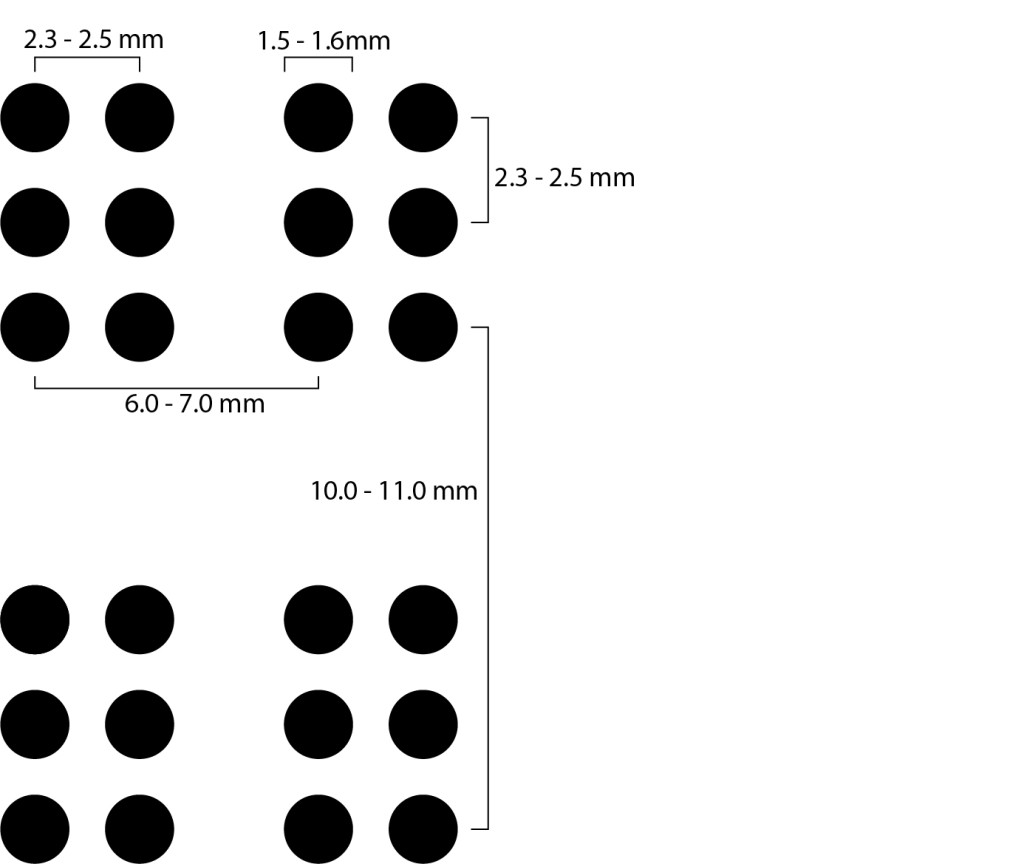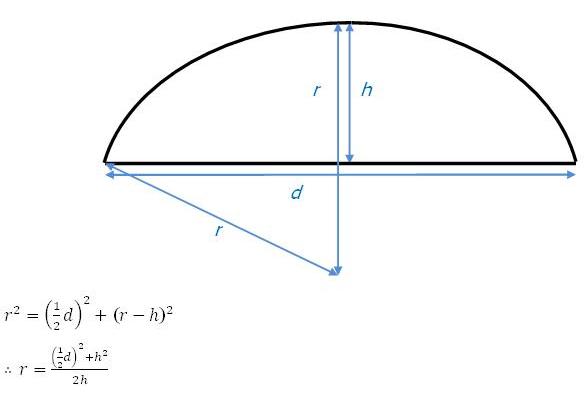These specifications define the size of braille dots and the distance between them on signage as recommended by the Australian Braille Authority. These specifications were revised in February 2014.
While these standards allow for a range of dimensions, there should always be internal consistency on a sign with a maximum of 1% variation.
A braille character is composed of a combination of dots from a matrix of three rows and two columns, known as a cell.

a braille cell
Distance between dots
Horizontal or vertical distance from centre to centre of adjacent dots in the same cell = 2.3 mm – 2.5 mm
Horizontal distance from centre to centre of corresponding dots in adjacent cells = 6.0 mm – 7.0 mm
Vertical line spacing from centre to centre of nearest corresponding dots in adjacent lines = 10.0 mm – 11.0 mm
A gap between words is indicated by a blank braille cell.

Dot size
dot base diameter = 1.5 mm – 1.6 mm
dot height = 0.6 mm – 0.9 mm
spherical radius = 0.76 mm – 0.81 mm
Spherical radius r is related to the dot base diameter d and dot height h, as illustrated in the diagram below.

 The Australian Braille Authority is a subcommittee of the Round Table on Information Access for People with a Print Disability Inc.
The Australian Braille Authority is a subcommittee of the Round Table on Information Access for People with a Print Disability Inc.
